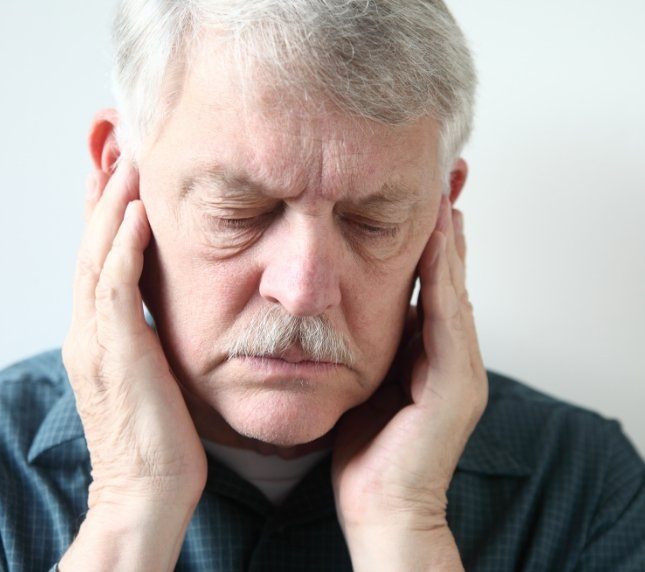“Dr. Mattson and her staff of hygienists are the best. After 15 years of teeth and gum problems, Dr. Mattson accurately diagnosed my problems and offered the right type of treatments. One treatment included a night guard — I didn’t even know that I was grinding my teeth at night, thus making them loose and my jaw sore, etc. After a year of using the night guard my teeth are in great shape, my mouth is pain free, and my gums are healthy! Dr. Mattson is honest and tells it straight, and I am thankful for her expertise, knowledge, and insights.”
TMJ Treatment Owings Mills
Helping When Your Jaw Is in Pain
For most people, opening and closing their mouths is a simple movement that is easily taken for granted. However, the movement is more complex than you might think, and if the joints being used malfunction or become injured, then the consequences can be quite painful. Your temporomandibular joints—TMJs—are the ones that allow you to move your lower jaw open, shut, and side-to-side. If you routinely feel discomfort when your jaw moves, then you may be experiencing TMJ disorder. Fortunately, there is care available. Your Owings Mills dentist Dr. Monica Mattson offers effective TMJ treatment, allowing you to eliminate pain and other symptoms of this debilitating condition.
Why Choose Diamond Dental of Owings Mills for TMJ Treatment?
- Personalized Oral Appliances
- A Team That Prioritizes Quality
- Convenient Office Hours
The Signs and Symptoms of TMJ Disorder

The most common symptom indicating the possibility of TMJ disorder is pain when you open or close your mouth to eat, speak, smile, laugh, or yawn. Other symptoms are:
- Hearing a popping or clicking sound when you open your mouth
- Feeling as if your jaw is locked in one position
- Facial swelling near the TMJ joint
- Headaches or earaches
- Tooth sensitivity without signs of worn enamel or decay
- Weakened facial muscles
Diagnosing TMJ Disorder

Pinpointing the reason for TMJ disorder is often difficult. For some patients, TMJ disorder begins with bruxism, or teeth grinding and clenching. The terms TMJ disorder and bruxism are often used interchangeably because people mistakenly believe they are one and the same. In truth, they are two distinct conditions, but one can impact the other. However, it is possible to have TMJ disorder and not grind and clench your teeth, as well as vice versa.
Other causes of TMJ disorder include a hard blow to the face that damages the joint, arthritis in the joint, and stress.
If you are experiencing any of the symptoms listed above, then schedule an appointment with Dr. Mattson. She will give your mouth and teeth a comprehensive examination, and she’ll check for areas of pain and sensitivity by palpating your temporomandibular joints as well as your jaw and neck. She’ll also assess your bite, which can become misaligned because of TMJ disorder. Digital X-rays may also be advised if Dr. Mattson needs to see the inner workings of your TMJ and jaw.
Treating TMJ Disorder in Owings Mills

If the diagnosis is that you have TMJ disorder, then there are several different treatment options. A mouthguard can be used at night if bruxism is evidenced by worn-down teeth. The comfortable oral appliance prevents your upper and lower teeth from touching, and it reduces the jaw pressure that bruxism causes. In cases where the TMJ disorder is related to bite problems, equilibration can be performed to ensure that the teeth meet in the right places and don’t put too much pressure on the jaw joints.
Other treatments include stress-reducing activities such as yoga and meditation, a soft foods diet, and ibuprofen to reduce pain and swelling.
TMJ Treatment FAQs
Can TMJ Disorder Be Cured Permanently?
Discomfort associated with TMJ disorder can sometimes subside on its own over time. However, if your symptoms are starting to impact your everyday life, you should seek treatment. Both occlusal splints and occlusal adjustments/equilibration are designed to permanently address jaw tension, misalignment, and other causes of TMD, thereby providing lasting relief!
Is TMJ Treatment Safe?
As long as your TMJ treatment is completed by a qualified professional, the process should be completely safe. Most of the time, TMJ disorder is treated with minimally invasive and conservative methods, so there are fewer risks involved. Mouthguard and equilibration have both been proven to be overwhelmingly safe for addressing TMD. For extreme measures, like surgical procedures, are only ever recommended as a last result.
How Long Does It Take for a TMJ Splint to Work?
Occlusal splints for TMD are usually worn to bed at night. You may notice that your symptoms start to subside fairly quickly, but they likely won’t go away all at once. It takes time for your TMJs and the surrounding areas to adjust to their new positions. After about six weeks, most patients experience marked improvement, but not full relief. It usually takes about three to six months for an occlusal splint to resolve discomfort. Just keep in mind that everyone is different, so recovery times can vary.
Does Occlusal Adjustment for TMJ Hurt?
No matter which specific changes need to be made to properly align your teeth and jaws, your dentist will make sure that your treatment is comfortable every step of the way. Typically, occlusal adjustment is performed by precisely filing down the biting surfaces of the teeth that protrude and throw off the bite’s overall balance. A very small amount of enamel is removed to alleviate the stress on your jaw joints without negatively impacting your oral health. In some cases, occlusal adjustment may involve adding to existing dental structures using composite resin.
Can TMJ Disorder Be Treated Without Surgery?
Yes! In fact, the National Institutes of Health recommends using the most conservative methods possible for treating TMJ disorder. When treating TMD, less is often more. Surgery involves making permanent changes to the jaw and nearby anatomy, and it is only ever suggested as a last result. In most cases, TMD can be treated with less invasive methods. In addition to at-home methods, like stress relief, TMD can be alleviated with occlusal splints and equilibration/occlusal adjustments.
What Our Patients Are Saying
Many patients don’t realize the underlying cause of their discomfort. Fortunately, we can diagnose and treat the actual problem, leading to better outcomes. Want proof? Check out our reviews!

I Need a Checkup & Cleaning I Have Red/Sensitive Gums I Need a Dentist for My Child I Have a Cavity or Broken Tooth I am Missing One or More Teeth I Want to Enhance My Smile I Want to Straighten My Teeth I Have a Dental Emergency I Snore/Have Sleep Apnea I'm Scared of the Dentist View Our Services
